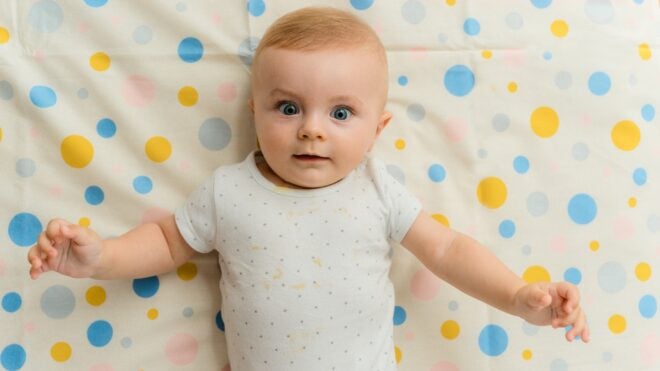Your child's well-loved toys can be comfy homes for viruses and bacteria if you don't keep them clean. But busy moms don't want to spend their days wiping down little plastic vegetables when they could be playing "dinner party" with their little ones. Allison Schlanger, co-owner of Apple Seeds Play Space in New York City, recommends learning some time-saving tips to fully sanitize toys as quickly as possible. Once you get in the groove of cleaning your kid's toys efficiently and thoroughly, you'll be able to enjoy much more play time, sans heebie-jeebies.
Appliances to the Rescue!
Your clothes washer is capable of blasting away dirt and killing germs. Make this bad boy multitask! Read the tags on soft toys to run them through the washer without any damage. Schlanger suggests using a mesh laundry bag to keep soft or plastic toys contained and protected, and running plastic toys through the spin cycle to dry them quickly. There's plenty of capacity for large quantities of toys.
Bath toys and plastic toys can stay free of mildew and other ickiness by getting an occasional wash in the dishwasher, set on the light wash cycle with the heated dry turned off.
RELATED: The Best Bath Toys
Banish Hidden Mold
Water collecting inside toys can cause mold to accumulate, making thorough cleaning virtually impossible. "Seal up the small holes in toy fruits or vegetables with crazy glue or hot glue to prevent water from getting inside," Schlanger recommends. This keeps mold away and makes it much easier to clean the toy without having to take the time to get excess water and soap out of it. If your child cares more about the style of her bath toy than its ability to squirt, seal up those squirt holes right away to help it last longer and make it easier to clean.
Watch Your Cloths
Your cleaning efforts can actually be counterproductive if you aren't careful to avoid spreading germs from one toy to others. "If you are wiping down toys by hand, you should make sure to use clean sections of your cleaning cloth for each toy," Schlanger says. Try using each of four corners of a cloth to clean four small toys or using one side of a full cloth per large toy.
RELATED: Wooden Toys: The New Classics
Cut Chemicals
Toys will inevitably end up in your little one's mouth, and harsh cleaning agents can be just as harmful as germs. "Always make sure to use nontoxic cleaning solutions, especially when living, working and playing with kids," Schlanger warns. Make your own kid-safe surface cleaner by putting white vinegar in a spray bottle with some lemon peel and a sprig of rosemary, or purchase nontoxic cleaners and detergents. Make sure you rinse off all cleaners completely.



